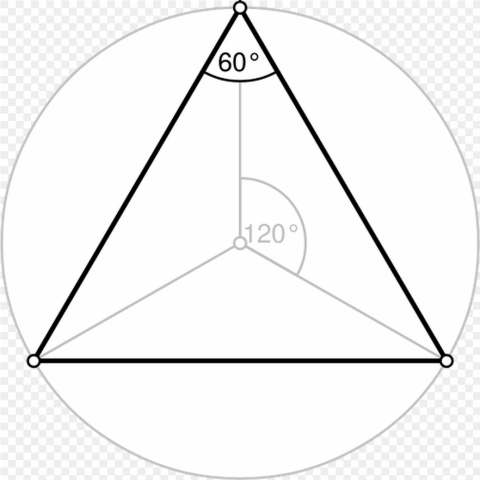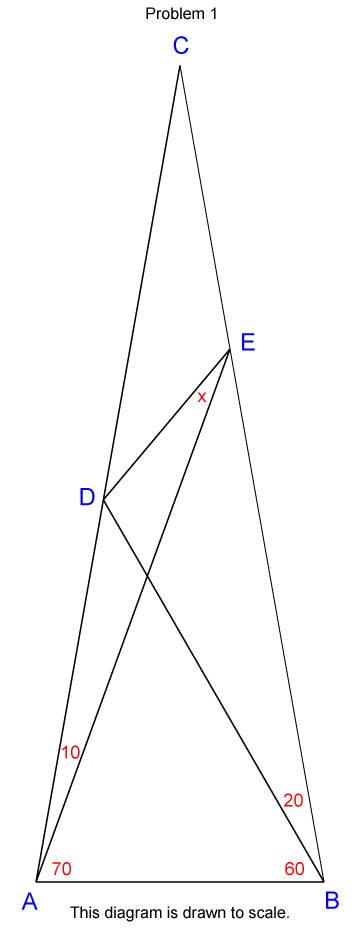 Last week @dpscher gave me beta access to the new Geometer's Sketchpad Web Sketch export tool and so I started to turn my sketches into WebSketches. Making a standard GSP sketch into a websketch means students can interact with that sketch without actually having the GSP software. It all runs on any platform straight from the web. Up until now I have been optimizing my sketches to be used with Sketchpad Explorer on the iPad. That is a free app but it has two limitations: 1) no construction tools and 2) only useable on an iPad. With Sketch explorer both of those problems are solved. So far I have only converted 12 of my sketches (and they were all optimized for iPad) but I think this now means I may start creating some new ones in the future. But for now check out my page of sketches
Last week @dpscher gave me beta access to the new Geometer's Sketchpad Web Sketch export tool and so I started to turn my sketches into WebSketches. Making a standard GSP sketch into a websketch means students can interact with that sketch without actually having the GSP software. It all runs on any platform straight from the web. Up until now I have been optimizing my sketches to be used with Sketchpad Explorer on the iPad. That is a free app but it has two limitations: 1) no construction tools and 2) only useable on an iPad. With Sketch explorer both of those problems are solved. So far I have only converted 12 of my sketches (and they were all optimized for iPad) but I think this now means I may start creating some new ones in the future. But for now check out my page of sketchesCurriculum Tags: All
http://engaging-math.blogspot.ca/p/web-sketches.html
 It's an interesting concept. With so many math teachers blogging now a days, it is easy to miss something (it's kinda what this blog is for). But a group from the MTBoS (some of the same people that brought you Nix the Trix) have tried to compile some of the best posts from last year. The posts were nominated and then voted on and finally compiled in a physical book which you can buy from Amazon (proceeds going towards scholarships) or better yet directly (more of the money goes to the scholarship). The book is broken up into four groups: Stories, Engaging Activities, Teachers' Learning Reports and Thoughts on Teaching. They are all truly based on original blog posts like this one from fellow Ontario teacher @mathtans. So even though they are all online, having them in one place and helping fund a scholarship is, perhaps, a reason to buy your own.
It's an interesting concept. With so many math teachers blogging now a days, it is easy to miss something (it's kinda what this blog is for). But a group from the MTBoS (some of the same people that brought you Nix the Trix) have tried to compile some of the best posts from last year. The posts were nominated and then voted on and finally compiled in a physical book which you can buy from Amazon (proceeds going towards scholarships) or better yet directly (more of the money goes to the scholarship). The book is broken up into four groups: Stories, Engaging Activities, Teachers' Learning Reports and Thoughts on Teaching. They are all truly based on original blog posts like this one from fellow Ontario teacher @mathtans. So even though they are all online, having them in one place and helping fund a scholarship is, perhaps, a reason to buy your own.Curriculum Tags: All
http://drawingonmath.blogspot.ca/2016/03/the-best-of-math-teacher-blogs-2015.html
 If you follow the @desmos blog you know they often post links to some of their favourite teacher generated activities. I really like this Match My Polynomial Activity. At first I thought it might be a little tough but the incremental way that it is done is really nice.
If you follow the @desmos blog you know they often post links to some of their favourite teacher generated activities. I really like this Match My Polynomial Activity. At first I thought it might be a little tough but the incremental way that it is done is really nice.Curriculum Tags: MHF4U, MCR3U
https://teacher.desmos.com/activitybuilder/custom/56b90984064eaf004334ee69#
 Here's a nice example of using QR codes to send students to answers from stations of questions (in this case solving right triangles using trig. And as a bonus you get an interactive notebook (INB) template too boot.
Here's a nice example of using QR codes to send students to answers from stations of questions (in this case solving right triangles using trig. And as a bonus you get an interactive notebook (INB) template too boot.Curriculum Tags: MPM2D, MFM2P
http://ispeakmath.org/2016/03/03/trigonometry-stations/
 I like when you can give a standard question a little tweak to make it richer. That's what @natbanting did with this standard surface area question: Design an addition that will double the surface area of this house. See what the kids did here
I like when you can give a standard question a little tweak to make it richer. That's what @natbanting did with this standard surface area question: Design an addition that will double the surface area of this house. See what the kids did hereCurriculum Tags: Gr7, Gr8, MPM1D, MFM1P, MPM2P
http://musingmathematically.blogspot.ca/2016/02/my-favourite-surface-area-question.html

A new WebSketch from @dpscher to have students solidify relative size of fractions with a circle model. Students who have a conceptual relationship with fractions will often do better when it comes to operations with fractions so a sketch like this can always help in remediating issues or even when introducing the concept of fraction size.
Curriculum Tags: Gr7, Gr8
http://blog.keycurriculum.com/comparing-and-identifying-fractions-visually/
 Since he's working out of the @desmos offices now @ddmeyer has been updating some of his older stuff. A great "go to" lesson is his Will it Hit the Hoop. In the original lesson he had loads of video files and images for all the scenarios. Now it's all done as a Desmos activity. No videos (which I love but I do like the draggable points to model the motion. Check it out.
Since he's working out of the @desmos offices now @ddmeyer has been updating some of his older stuff. A great "go to" lesson is his Will it Hit the Hoop. In the original lesson he had loads of video files and images for all the scenarios. Now it's all done as a Desmos activity. No videos (which I love but I do like the draggable points to model the motion. Check it out.Curriculum Tags: MPM2D, MFM2P, MCR3U, MCF3M, MBF3C
http://blog.mrmeyer.com/2016/updated-will-it-hit-the-hoop/
 Here is a neat little probability activity you could do with your students from @natbanting. It's a simple action where students bid on outcome of rolling two dice. The dice are then rolled 20 times and any student who "own" an outcome gets prizes if that comes up. So if a student purchased 6 and it came up seven times then they win seven prizes. It would be interesting to play this to see if kids have an intuitive feel about the likelihood of certain numbers coming up
Here is a neat little probability activity you could do with your students from @natbanting. It's a simple action where students bid on outcome of rolling two dice. The dice are then rolled 20 times and any student who "own" an outcome gets prizes if that comes up. So if a student purchased 6 and it came up seven times then they win seven prizes. It would be interesting to play this to see if kids have an intuitive feel about the likelihood of certain numbers coming upCurriculum Tags: Gr7, Gr8, MBF3C, MDM4U
http://musingmathematically.blogspot.ca/2016/03/dice-auction.html
 The "math wars" continue to keep coming up (I think they always will). In this post @mathletepearce tries to break them down a bit by asking the explicit question "Is there a best way to learn math?". He goes over the two extremes of explicit instruction and inquiry based learning (@davidwees tossed in a third option on Twitter). One thing Kyle points out is that regardless of witch way you lean, interpretation can always be different: "...teacher interpretation of what an inquiry math lesson looks like varies drastically.". Lot's of great references here, so don't miss it.
The "math wars" continue to keep coming up (I think they always will). In this post @mathletepearce tries to break them down a bit by asking the explicit question "Is there a best way to learn math?". He goes over the two extremes of explicit instruction and inquiry based learning (@davidwees tossed in a third option on Twitter). One thing Kyle points out is that regardless of witch way you lean, interpretation can always be different: "...teacher interpretation of what an inquiry math lesson looks like varies drastically.". Lot's of great references here, so don't miss it.Curriculum Tags: All
https://tapintoteenminds.com/best-way-to-learn-math/
A chance for you and your students to have your opinion on what the most beautiful equation is. Whether it's the simplicity of the equation for pi or something more complex like the wave equation, you can choose. There is a description of each equation if you aren't familiar with the choices. Personally I am in favour of Euler's Identity. Anyway, place your vote here.
Curriculum Tags: All
http://www.bbc.com/earth/story/20160120-you-decide-what-is-the-most-beautiful-equation-ever-written
Here is a great example that you can use when teaching about the fundamental counting principal.
Curriculum Tags: MDM4U
https://www.youtube.com/watch?v=gocwRvLhDf8
Still catching up on Pi Day posts. This one from Math With Bad Drawings points out 10 cool ways to calculate the value of Pi
Curriculum Tags: All
http://mathwithbaddrawings.com/2016/03/14/the-pi-day-recipe-book/
A Great problem for calculating/estimating volumes of irregular shapes from Yummy Math. Get the full activity here
Curriculum Tags: Gr7, Gr8, MPM1D, MFM1P, MFM2P
http://www.yummymath.com/2016/how-much-snow-is-that/






























